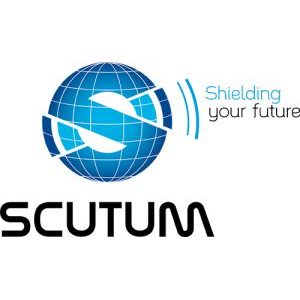Staff Fire Safety Training: A Complete Guide for Facilities Managers
Includes:
Maintaining high levels of fire safety is a priority for any facilities manager – not only to avoid damage to property and danger to employees/visitors, but also to comply with the stipulations of the Regulatory Reform (Fire Safety) Order 2005, which states that a ‘responsible’ person within any organisation (employer, building owner etc.) is charged with ensuring that all personnel receive sufficient fire safety training to keep them informed of risks.
Despite having ultimate culpability, the ‘responsible person’ cannot take the full weight when it comes to fire safety in a facility. This makes staff training so important, and giving your employees knowledge regarding the law, the physics behind fire (the ‘fire triangle’), the various different fire classes and extinguisher types and usage will increase the overall health and safety levels within any organisation.
The Law
The Regulatory Reform (Fire Safety) Order 2005 is the overriding piece of regulation that governs fire safety in the workplace environment, introduced to bring together the 70+ previous disparate bits of law relating to specific areas of the field.
Giving your facilities staff sufficient knowledge of their responsibilities when it comes to safety, evacuation procedures and hazard reporting will go a long way towards protecting them from the threat of fire.
The majority of this information will be conveyed through fire safety training, which, according to the Fire Safety Order, should take place “at the time when they are first employed” and then again when they are “exposed to new or increased risks”.
The Fire Triangle
As with most things, prevention is always better than the cure. That’s why it is important to give your staff detailed knowledge of the science behind the cause of fire.
This is where the ‘fire triangle’ comes in. A simple way to remember the three elements that are required for a fire to start, heat, fuel and oxygen, the triangle also offers a straightforward way to combat a blaze by removing one of the three.
- Heat, also required for ignition, can be removed by cold water (on certain fires).
- Fuel can be taken away by starving the fire of its combustible materials (flammable solids, liquids or gases).
- Oxygen feeding a fire can be smothered, possibly by a fire blanket if appropriate.
Whatever facilities you operate within, whether cleaning, catering, security, industrial premises or somewhere else, the firefighting equipment you require might vary. The principles of the fire triangle are universal, however, underlining the importance of training your staff about the science behind combustion.
Five Fire Classes
Although all fires can be devastating to businesses and lives, they are officially separated into different types that are determined by the materials involved in the blaze. These are known as the five fire classes, and, depending on the nature of the facilities in which you operate, some will be more prevalent than others:
- Class A: Solid materials, including wood, plastics, fabrics, paper etc. Those facilities managers working in warehouses or offices should be aware of this.
- Class B: Flammable liquids, including oil, solvents, petrol and paint. Industrial facilities managers should take note of this class, particularly if operating in factories and garages.
- Class C: Flammable or combustible gases, including propane, methane and butane. Industries that use these types of gas should be made aware of Class C fires, especially if there are compressed gas cylinders present onsite.
- Class D: Flammable metals, including titanium, aluminium and potassium. A particularly dangerous fire class, areas of industry and manufacturing should be up to speed with how to handle it.
- Class F: Cooking oils and fats. Self-explanatorily, this class is most relevant to kitchen and catering facilities.
Facilities managers should be made aware that fire classes are sometimes given different nominations in the USA and Australasia. For example, Class C fires in the US are electrical based, while the States also refer to Class F as ‘K’. When conversing with international organisations, or hiring staff from these countries, bear this in mind when carrying out fire class training.
Extinguishers
Fire safety equipment is obviously a key focus of your staff’s overall training, and fire extinguishers are among the most important elements that make up your primary defence. Training regarding their type and usage is a requirement for nominated fire marshals at a minimum – but your whole staff will benefit from understanding this crucial piece of equipment.
It is important to stress that your staff should only use fire extinguishers on small and controllable fires. Anything bigger should be left to the professionals, and evacuation becomes the priority.
Types
In direct correlation to how the fires themselves are divided into separate classes, so too are there different types of fire extinguisher. The materials contained within each extinguisher relate to the nature of the fire that they are fighting, and using the correct one is vital towards successfully combating a blaze. Each type has a coloured band across the face of the extinguisher.
- Water (red): Suitable for solids such as wood, paper, fabric. Class A fires
- CO2 (black): Used for flammable liquids and electrical fires. Class B fires
- Powder (blue): For liquids, gas, oils, chemicals and electrics. Class B, C and F fires
- Foam (cream): Suitable for some flammable liquids, timber-based solids and paper. Class A and B fires
- Wet Chemical (yellow): For cooking oils and fats. Class F fires
Usage
As with the ‘fire triangle’, fire extinguisher usage has a handy method to aid the memory, known as ‘PASS’. This gives all facilities managers a useful way to train staff in the best way to operate an extinguisher.
- P: PULL the pin out of the end of the extinguisher.
- A: AIM the end of the nozzle directly at the base of the fire. This will ensure that the extinguishing materials have the best chance of removing the fuel source from the blaze.
- S: SQUEEZE the operating level in a controlled manner.
- S: SWEEP the nozzle back and forth across the base of the fire, starting from a safe distance away and gradually moving in as the blaze subsides.
Fire Safety Training Courses
If, as a facilities manager, you are the nominated ‘responsible person’ in an organisation, don’t worry too much if you are unsure about the best way to carry out fire safety training. There are a number of courses that are run across the country by specialist fire safety experts, either onsite at your place of business or externally at specialist fire marshal training, helping you to remain compliant with the Regulatory Reform (Fire Safety) Order.
In the facilities management industry, fire safety training is a mandatory requirement, and many courses can be tailored to the specific requirements of your field, and refresher courses are available to retain a high standard of fire safety year-on-year.
Whatever the nature of your business, Scutum London can provide appropriate, relevant and practical fire safety training that will help protect you, your premises, your staff and your visitors from the dangers of fire.
Book your training by getting in touch with our professional advisers today.
Request a Callback
Just fill in your details below and we'll get back to you as soon as we can!

About Scutum London
Scutum London is a leading expert in fire safety and security solutions for businesses and organisations located across South East England, including London and Surrey.
From fire alarms, fire extinguishers and fire risk assessments to access control, CCTV and intruder alarm systems – and a lot more besides – we offer a comprehensive range of products and services designed to keep you, your business and your staff and visitors safe.
With decades of industry experience to call on, we’re proud to hold accreditations from leading trade associations and bodies such as British Approvals for Fire Equipment (BAFE), the British Fire Consortium, the Fire Industry Association (FIA) and Security Systems and Alarms Inspection Board (SSAIB).
If you’d like to find out more about Scutum London, get in touch with our friendly team or explore our products and services on our site.

